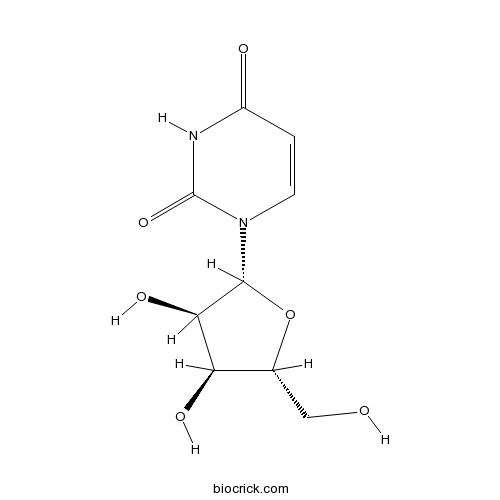Cervus elaphus
Cervus elaphus
1. The products in our compound library are selected from thousands of unique natural products; 2. It has the characteristics of diverse structure, diverse sources and wide coverage of activities; 3. Provide information on the activity of products from major journals, patents and research reports around the world, providing theoretical direction and research basis for further research and screening; 4. Free combination according to the type, source, target and disease of natural product; 5. The compound powder is placed in a covered tube and then discharged into a 10 x 10 cryostat; 6. Transport in ice pack or dry ice pack. Please store it at -20 °C as soon as possible after receiving the product, and use it as soon as possible after opening.
Natural products/compounds from Cervus elaphus
- Cat.No. Product Name CAS Number COA
-
BCN4090
Uridine58-96-8
Instructions

Gas and short-chain fatty acid production from feeds commonly fed to red deer (Cervus elaphus L.) and incubated with rumen inoculum from red deer and sheep.[Pubmed: 29978922]
None
Correction: Genetic diversity, genetic structure and diet of ancient and contemporary red deer (Cervus elaphus L.) from north-eastern France.[Pubmed: 29940045]
[This corrects the article DOI: 10.1371/journal.pone.0189278.].
Game meat consumption by hunters and their relatives: a probabilistic approach.[Pubmed: 29912678]
This study aimed to estimate the consumption of meat and products derived from hunting by the consumer population and, specifically, by hunters and their relatives. For this purpose, a survey was conducted on the frequency of consuming meat from the four most representative game species in Spain, two of big game, wild boar (Sus scrofa) and red deer (Cervus elaphus), and two of small game, rabbit (Oryctolagus cuniculus) and red partridge (Alectoris rufa), as well as of processed meat products (salami-type sausage) made from those big game species. The survey was carried out on 337 habitual consumers of these types of products (hunters and their relatives). The total mean game meat consumption, per capita in this population group, is 6.87 kg/person/year of meat and 8.57 kg/person/year if the processed meat products are also considered. Consumption of rabbit, red partridge, red deer and wild boar, individually, was 1.85, 0.82, 2.28 and 1.92 kg/person/year, respectively. It was observed that hunters generally registered a larger intake of game meat, this being statistically significant in the case of rabbit meat consumption. Using probabilistic methods, the meat consumption frequency distributions for each hunting species studied were estimated, as well as the products made from big game species and the total consumption both of meat by itself and that including the products made from it. The consumption frequency distributions were adjusted to exponential ones, verified by the test suitable for it according to Akaike Information Criterion (AIC), Bayesian Information Criterion (BIC), the Chi-squared and Kolmogorov-Smirnov statistics. In addition, the consumption percentiles of the different distributions were obtained. The latter could be a good tool when making nutrition or contaminant studies since they permit the assessment of exposure to the compound in question.
A SURVEY OF PARASITE LESIONS IN WILD RED DEER ( CERVUS ELAPHUS) FROM ARGENTINA.[Pubmed: 29791294]
In Argentina there is little information about diseases that affect exotic ungulates and the health risks that they pose to native wildlife, livestock, and humans. The aim of this study was to evaluate the health status of red deer ( Cervus elaphus) in the Nahuel Huapi National Park and surrounding areas in Patagonia, Argentina. During three consecutive hunting seasons, necropsies were performed on 101 red deer, and tissues were examined histologically. The most common lesions were those associated with hepatic and pulmonary parasites. Fasciola hepatica was observed in 15 red deer and was associated with cholangiohepatitis (8%) and/or cholangitis (10%). Dictyocaulus sp. (likely Dictyocaulus eckerti) was associated with interstitial pneumonia (5%), bronchitis (5%), pulmonary emphysema (13%), and bronchus-associated lymphoid tissue hyperplasia (13%). Other findings included Sarcocystis spp. cysts in the myocardium (89%) associated with interstitial, focal, lymphoplasmacytic myocarditis (8%); periportal lymphoplasmacytic hepatitis (8%); hepatic centrilobular necrosis (6%); lymphoplasmacytic interstitial nephritis (25%); and follicular hyperplasia in mediastinal, prescapular, and prefemoral lymph nodes (86%). Our report of lesions caused by endemic parasites of livestock in free-ranging exotic red deer in Patagonia sets the foundation for a health-monitoring and -surveillance system of wildlife in this region, which is essential for the sustainable management of threatened Argentinean native fauna.


